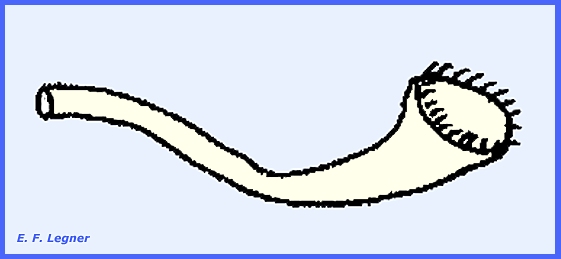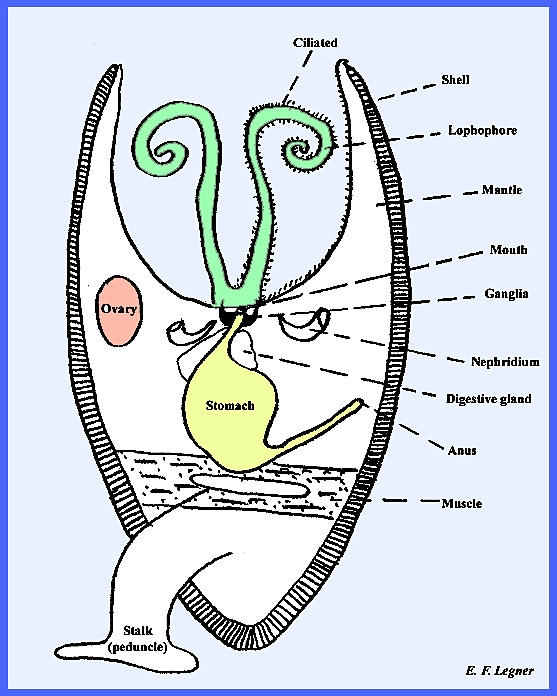File:
<brachiopoda.htm> <Index to Invertebrates> <Bibliography> <Glossary> Site Description
<Navigate to Home>
|
Invertebrate
Zoology Kingdom: Animalia, Phylum: Brachiopoda (Contact)
CLICK on underlined file names and
included illustrations to enlarge: The Brachiopoda
are entirely marine
organisms that were very
abundant during the Paleozoic Era but which today constitute a relatively
small group. They are bivalve shells,
the dorsal and ventral shells being unequal in size and shape. This differs from clam shells that are
lateral. There is a stalk at the
posterior end called the peduncle and
which serves for attachment. A lophophore
occupies the whole anterior half of the shell and serves as a feeding
mechanism similar to that found in the Bryozoa. There is a U-shaped digestive tract and a true coelom. But there are no special respiratory
organs. Nephridia are
present that serve for excretion.
These are a pair of ciliated tubes, which open into the coelom on one
side and to the outside of the organism on the other side. Circulation.--
There is a heart with several vessels. Musculature.--
There is a well developed musculature, especially in the stalk and for the
two valves. Nervous System.-- A nerve
string and ganglia are present Sense
Organs.-- Various sense
organs occur on the area of the lophophore. Reproduction.--
Gonads lie on the mantle, which is a thin flap
of the body wall. Most species are
hermaphroditic. Cavities of the
coelom extend into the mantle and these then hold the gonads. Gametes leave the body by way of the
nephridia. Fertilization is
external. Ciliated larvae are formed,
which swim out, settle down, and develop into a new individual. ------------------------------------ Please see
following plate for Example Structures of the Brachiopoda: Plate 62 = Phylum: Brachiopoda: Lingula
sp., Laqueus sp. & fossil ============== |

